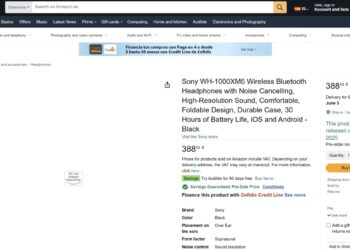Noise cancelling headphones have become a popular choice for music lovers, frequent travelers, and anyone looking to escape the hustle and bustle of daily life. While these headphones offer various benefits, they also come with a set of disadvantages. Below, we explore the negatives of noise cancelling headphones, helping you make an informed decision before purchasing a pair.
Understanding Noise Cancelling Technology
Before delving into the drawbacks, it’s essential to understand how noise cancelling headphones work. They use microphones to detect ambient noise and produce sound waves that are inverted to cancel out the unwanted sounds. This feature can create a serene listening environment, but it can also lead to several issues.
Potential Drawbacks
Here are some key concerns associated with noise cancelling headphones:
1. Sound Quality Compromises
- Altered Audio Experience: Noise cancelling features can sometimes distort audio quality, particularly in lower-end models.
- Loss of Detail: Certain headphones may diminish subtle sounds, impacting the overall listening experience.
- Non-linear Sound Waves: When noise cancellation is activated, some users may experience an unnatural, “hollow” sound.
2. Ear Pressure and Fatigue
- Feeling of Pressure: Many users report a sensation of pressure in their ears while using active noise cancelling (ANC) headphones, which can be uncomfortable.
- Fatigue During Extended Use: Wearing them for long periods can lead to ear fatigue or discomfort, making it hard to enjoy music or podcasts for extended sessions.
3. Safety Concerns
- Obscured Surroundings: Wearing these headphones can muffle sounds from the surrounding environment, which may pose safety risks, particularly when walking or biking in busy areas.
- Social Isolation: Their design encourages solitude, which might limit natural interactions in social settings.
Practical Considerations
Aside from potential discomfort and safety issues, there are practical concerns to keep in mind.
1. Price and Maintenance
- Higher Cost: Quality noise cancelling headphones typically come with a higher price tag compared to standard headphones.
- Battery Dependency: Many models require batteries or charging, which can be inconvenient, especially on long trips.
2. Limited Effectiveness in Certain Environments
- White Noise and High-Frequency Sounds: ANC technology often struggles with high-frequency sounds, such as voices or alarms, which might not be effectively cancelled.
- Performance in Windy Conditions: Outdoor use can be problematic, as wind noise can disrupt the effectiveness of noise cancellation.
3. Weight and Bulkiness
- Heavy Design: Some noise cancelling headphones can be bulkier and heavier than regular headphones, leading to discomfort during long usage.
- Less Portable: Due to their size and components, they may not be as easy to travel with compared to more compact options.
User Experience and Preferences
Different users have varying needs and preferences when it comes to headphones. Understanding these variances can help in choosing the right pair.
1. Mixed User Experiences
- Skepticism Among Audiophiles: Audiophiles may prefer standard headphones for a purer audio experience.
- Varied Comfort Levels: What feels comfortable for one person might not suit another, making it essential to try different models.
2. Personal Use Cases
- Casual Listen: For casual listeners, noise cancelling features may not be necessary or worth the investment.
- Frequent Travelers: For those who travel frequently, the benefits might outweigh the negatives, despite some potential pitfalls.
Awareness of these negatives allows you to approach your purchase of noise cancelling headphones with a balanced perspective, equipping you to choose wisely based on your lifestyle and listening needs.





